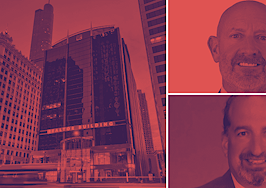No one can predict the future of real estate, but you can prepare. Find out what to prepare for and pick up the tools you’ll need at the immersive Virtual Inman Connect online Nov. 1-2, 2023. And don’t miss Inman Connect New York on Jan. 23-25, 2024, where AI, capital and more will be center stage. Bet big on the roaring future, and join us at Connect.
New Western’s latest Flip-Side report has good news for the single-family investor, including tips on how to identify the type of properties investors like most, a viable path to solving the inventory crisis and how investors are trading their 401Ks for real estate investment properties.
I recently interviewed Kurt Carlton, the president and co-founder of New Western, which helps investors locate properties that have the best potential for a good return. New Western now has close to 200,000 investors on its site. Their latest quarterly Flip-Side Report shares what investors are thinking in terms of purchasing residential investment properties. Here’s a look at some top takeaways from their latest report.
What matters most to investors
Carlton described the two primary problems investors face — they’re the same for someone buying a home as their primary residence. On a scale of one to 100, finding the right property would score about 70, and an additional 20 would apply to financing.
The same old rule that applies to purchasing a primary residence also applies to investors: What they care about most is location, location, location.
They just want a good house that’s got good bones so that they can put in the same type of floor plan they were putting in before.
New Western helps its investors solve those two problems by helping investors locate the right investment property, with financing if needed.
Investors are bullish about today’s market
Many of today’s primary residence buyers are pulling out of the market due to increasing mortgage rates. In contrast, the Flip-Side report showed that 93 percent of the investors responding to their most recent survey were planning to purchase a property this year.
According to Carlton, the following factors are contributing to this trend:
The [mortgage interest] rates have not only discouraged some demand but have attacked the supply as well. Nobody’s selling because the rates are so high that they would double the rate [and the payment] they have right now.
Unlike 2021 and parts of 2022, materials today are much more affordable, and the inventory has loosened up a little bit. I think investors are happy to be in a more stable market where they can predict the outcome a little bit better.
Rehabbed properties are commanding the highest prices
The Flipside Report also showed that 80 percent of those who rehabbed a property sold it this year at or above the listing price. Carlton explained how investors who have rehabbed properties are commanding the highest prices.
They’re putting out a good product right now. If they understand their customer, there’s great design that goes into [the rehab]. It’s freshly reconstructed as compared to a listing where somebody’s lived there for 10 years, 20 years and they’ve done some paint and carpet. They’re very different products.
Smart investors are looking to purchase ‘value-add’ properties
According to Carlton,
Value-add means that there’s something [wrong] with that property that is beyond the desire or capabilities of a traditional homeowner to repair. Sometimes, it’s a small house that somebody inherited, where there’s an opportunity for an investor to do an addition to the property. Sometimes there was a plumbing leak in the slab that needs to be jackhammered and completely redone. It’s just beyond the scope of what a homeowner wants to do, so an investor needs to step in.
There are more than enough vacant homes to solve the inventory crisis
Economists constantly discuss how we need approximately five million new homes to have enough inventory to keep up with demand. Carlton had this to say about an entirely different way to meet that demand.
We have a centralized component that involves a lot of data science and identifies that [there are approximately] 15 million plus [vacant homes]. I think the last time I checked it was 16.5 million vacant homes in the United States.
The number is not super clear, because some of those houses are second homes, some of them are vacant properties that have been inherited and may be need a lot of work — those are the ones we’re trying to identify. So, this is just an ocean of vacant homes.
It’s a very opaque data set to try to find the ones that are really a right fit for real estate investors. We have approximately 800 acquisition specialists that all they do is visit these properties and chase down which ones are right for investors.
Carlton went on to explain how this can benefit a real estate agent and their sellers. Realtors don’t want to become project managers and contractors. It’s not the best use of their time.
For example, imagine that you have a close friend who inherited a house where the owner was a hoarder. It makes more sense to pass it along to New Western, where there are investors who are skilled in handling these types of properties.
Landlord or flipper — surprising facts about who these people are
Carlton explains these are often the same person. They flip houses to produce immediate income and hold other houses to generate future cash flow. Many of their clients are what Carlton calls “corporate refugees.”
Generally, we work with someone who is this corporate refugee who has been at their corporate job for a long time. They’re really good at management, understanding people and motivating them. They often want more autonomy in their life. They’re willing to take on a little bit more risk and be self-employed, and they start to gravitate into real estate.
A major shift among Gen Z
The latest Flip-Side Report shows that we’re currently experiencing a major shift. This shift is most prominent among Gen Z, where the oldest are only 26 years old.
It used to be you work your whole life for the same company and you got a pension. That shifted when 401(k)s had to be developed to provide people with income. Today, everybody is talking about the side hustle all the time. Thirty percent of our investors are full time investors. The other 70 percent have full-time jobs, so they’re gravitating into this space. I think people are becoming more comfortable being self-employed and doing that.
The great resignation versus the great renovation
According to Carlton, there’s a lot of opportunity coming. “We call it the great renovation.”
Leading up to 2008, we built 10 million houses in a 10-year period, and then we built nothing, leading to the current inventory crisis. That generation of houses is starting to approach an age where they’re starting to have major systems failing for the first time ever. [Examples include] a 20-year roof or plumbing leading under a concreate slab. This is stuff homeowners don’t want to deal with and it’s a great opportunity for real estate investors.
This is no longer TV — it [real estate investing] is going to be a real job, especially for millennials and especially Gen Z. We’re going to need all of them. The last National Association of Homebuilders report said we’re going to build 830,000 homes this year. It’s not enough.
There’s going to be close to 400,000 house flips this year, most of which are vacant property. We have an infrastructure problem delivering inventory to the market. Real estate investors are a big part of this [as small business owners]. These are often corporate refugees who want the lifestyle of working for themselves and see this as a creative outlet. We see this as a passion sort of thing. They enjoy building, rebuilding, changing neighborhoods, doing all those things.
One especially surprising statistic that Carlton cited was that 2.5 percent of New Western’s investors were over the age of 77. Their primary reason for investing was they were doing it for fun.
Replace your 401(k) with houses
Carlton says that many of their investors will flip houses for income, but they also think of rentals that they hold like most people would treat a 401(k). They look at rentals as being a way to build long-term wealth.
Instead of putting 20 percent to 30 percent down to get a positive cash flow, they’re buying something, they’re putting in some sweat equity and they’re adding value. If it cash flows 100 bucks a month, that’s not going to give them a huge income.
But what they’re doing is, especially if they own fewer than 10 of these rental properties, they can get a 30-year-fixed Fannie Mae mortgage, which was obviously a little bit more juicy two years ago, when you could get lower rates. If rates come down, it’s going to become more popular. But what’s most important about this is that a tenant is paying down your mortgage.
Carlton went on to say that if the investor obtains a fixed-rate loan, their cash flow will increase with the improvements they make, normal rent appreciation and inflation.
In an inflationary environment, housing is a great hedge against inflation. In the past, it has normally outperformed the S&P. It’s a great place to park illiquid capital and to obtain home price appreciation, debt reduction and grow a portfolio of wealth.
Carlton’s final takeaway is that we’re in a good place for real estate investing.
Unlike 2021 where everything was so hard and regular homebuyers didn’t care about the condition of the property, there’s really a nice balance right now. If we continue to remain in a high inflationary environment, which I believe will be with us for quite some time, it’s a great opportunity to own a rental property.
Bernice Ross, president and CEO of BrokerageUP and RealEstateC













